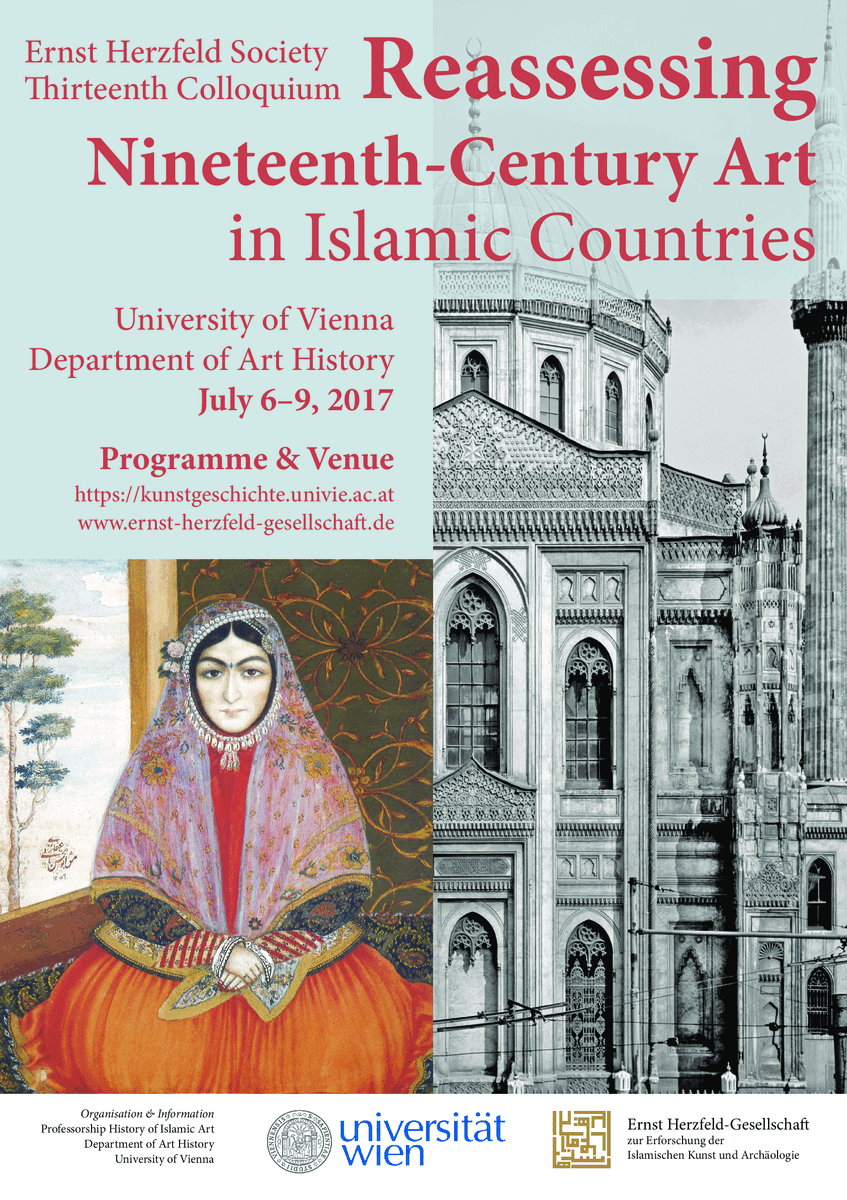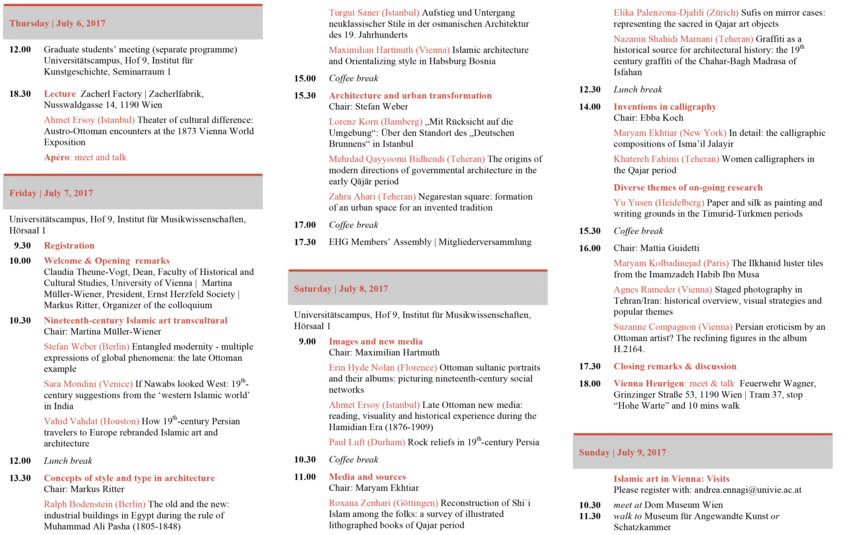Reassessing Nineteenth-Century Art in Islamic Countries
University of Vienna, Department of Art History, July 6–9, 2017

For art in Islamic countries, the nineteenth century is usually represented as a period that divides a 'traditional' past from a 'modern' present rather than linking them, and as such it has been excluded from most narratives of the history of Islamic art and architecture. To some degree it is still an ‘unknown century’ in terms of an understanding grounded in studies of objects and in conceptual categories (such as was said some fifty years ago for European art from the same period). Despite recent efforts, some regions, media, genres, and ouevres of nineteenth-century art remain less charted. Its understanding is mostly informed by concepts that foreground the global acceptance of European models, such as ‘Europeanization,’ ‘Westernization,’ or, that seek to describe their deliberate adoption and hybridization as ‘Occidentalism.’ Often perceived as transitional and uneven, the period has been framed by the binary of ‘tradition and innovation’ related to modernization. The multitude of formal references, abstracted from discrete meaning, has been characterized as ‘eclecticism’ including phenomena labelled as ‘revival.’
There is a need for reviewing and developing such concepts through case studies which focus on local artistic contexts and approaches. Thus changes of form, function, techniques and aesthetics of art and architecture in the period may become more evident when comparing them with local art traditions, and more meaningful when relating them to indigenous contexts of patronage and audience. While the relation of currents in art in Islamic countries to nineteenth-century evolutionary and historical thinking adopted by Muslim writers and intellectuals may be explored, more attention may also be given to phenomena of continuity with earlier art traditions. These aspects are by no means exhaustive, others may be added.

